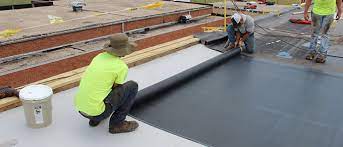Commercial roof replacement is a significant undertaking for any business, impacting both budget and the physical integrity of the building. It's essential to understand the key aspects of this process to ensure a successful project. Here's an informative guide to commercial roof replacement:
1. Recognizing the Need for Replacement: The first step is to determine whether your commercial roof needs a complete replacement. Signs include extensive leaks, major damage, and an aging roof that has surpassed its expected lifespan. Regular inspections by professionals can help identify these issues.
2. Choosing the Right Material: Commercial roofs can be made from various materials like metal, PVC, TPO, EPDM rubber, and built-up roofing. Each material offers different benefits in terms of durability, energy efficiency, and cost. It's crucial to choose a material that suits your building's needs and local climate.
3. Budgeting and Planning: Roof replacement is a significant investment. Obtain multiple quotes from reputable contractors and plan your budget accordingly. Also, consider the timing of the project to minimize disruption to your business operations.
4. Hiring a Qualified Contractor: The success of the project largely depends on the contractor you choose. Look for licensed, insured, and experienced contractors with good reviews and references. They should also understand local building codes and regulations.
5. Understanding the Replacement Process: The process typically involves removing the old roof, making structural repairs if necessary, and installing the new roofing system. It's important to discuss with your contractor about the scope of work, project timeline, and safety measures.

6. Ensuring Proper Ventilation and Insulation: Proper ventilation and insulation are crucial for the longevity of your new roof and the energy efficiency of your building. Make sure these aspects are addressed in the replacement process.
7. Maintenance and Aftercare: Once the new roof is installed, it's important to maintain it regularly to ensure its longevity. Schedule regular inspections and maintenance with your roofing contractor.
8. Warranties and Guarantees: Ensure that you understand the warranties provided for the materials and the workmanship. These can provide peace of mind and protect your investment.
Commercial roof replacement is a complex but essential process for maintaining the safety, functionality, and appearance of a commercial building. By understanding these key aspects, businesses can make informed decisions and ensure a successful roof replacement project.

No comments yet